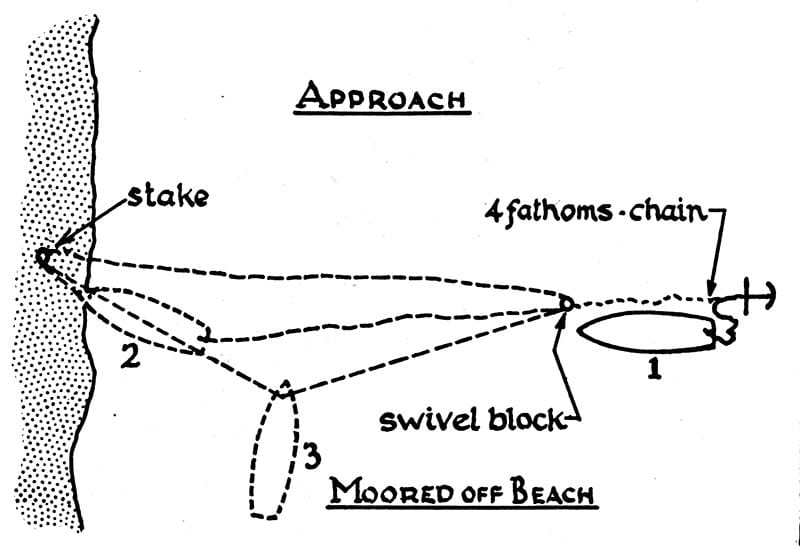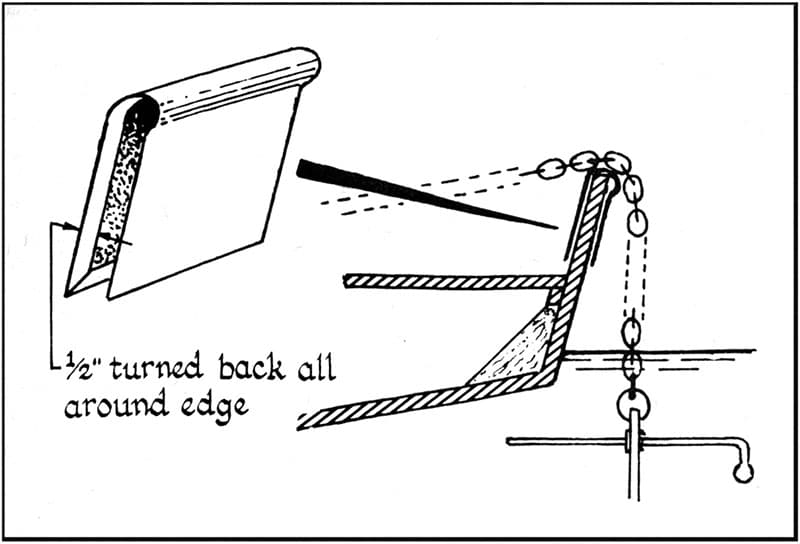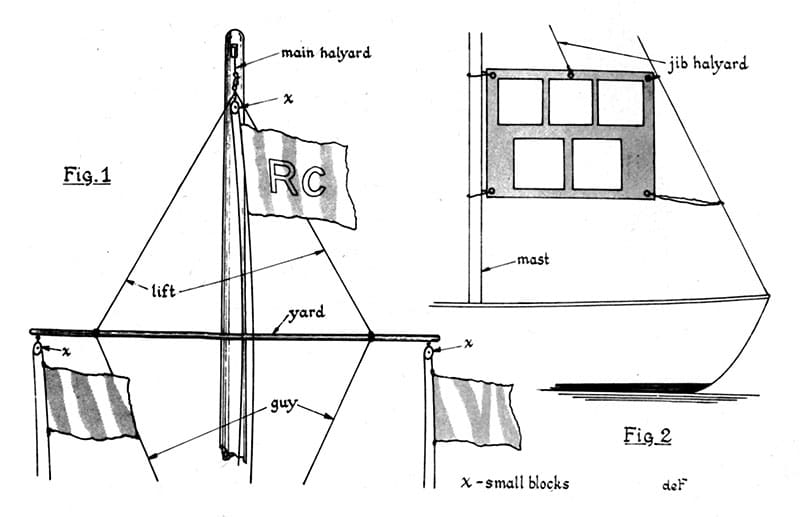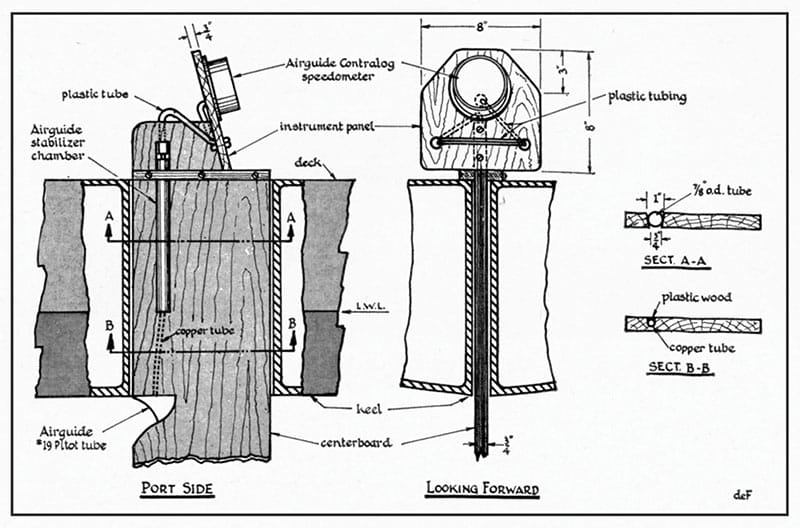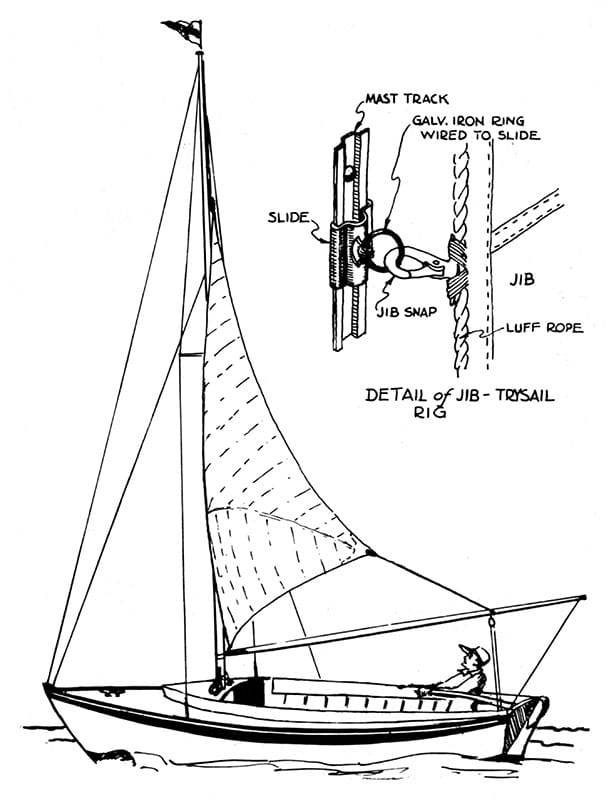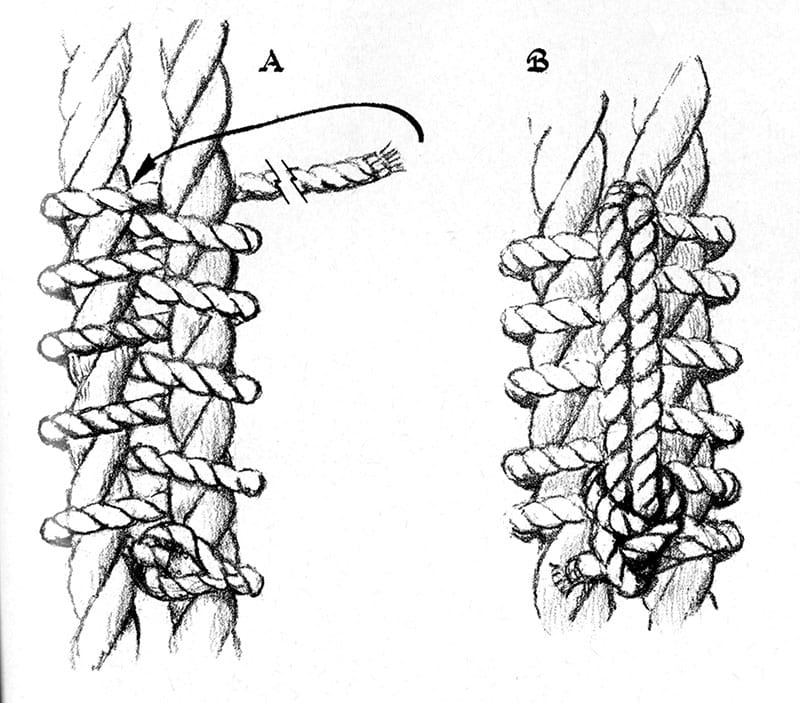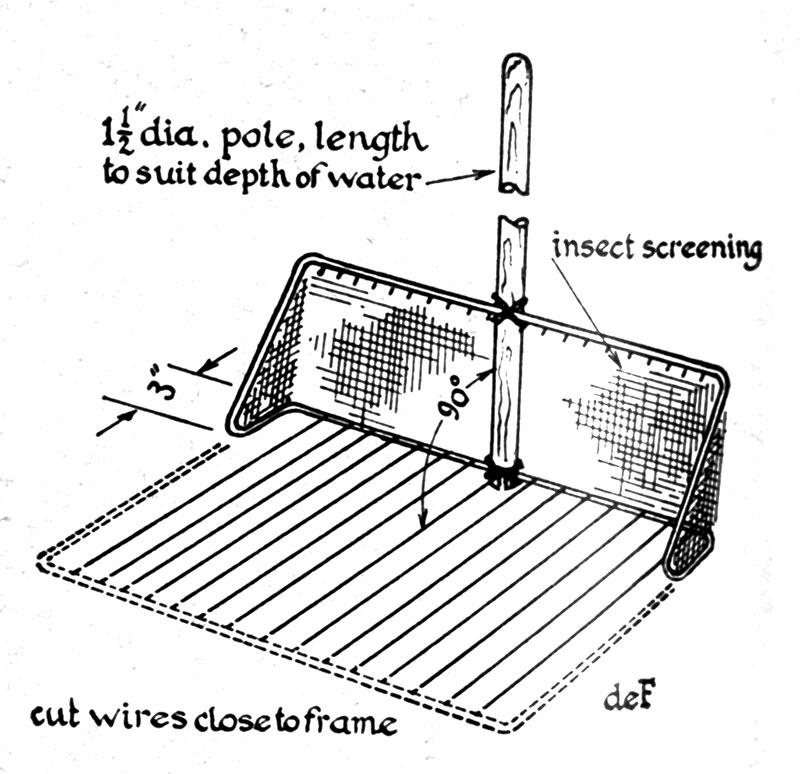This temporary outhaul rig will get your boat off a beach landing in a falling tide. Drop an anchor far enough offshore to ensure deep water after
the tide drops, then shackle four fathoms of chain to the anchor and, at the other end, a swivel block. Rove some line through the swivel block to make an outhaul. The swivel block and outhaul line allow crew to pull the boat to deeper waters upon departure.
Yachting
For about half the 20th century, Yachting ran a column titled Gadgets and Gilhickies. With a name like that, we couldn’t help but revisit the content and found it just as quirky as the title promised. Filling its pages are MacGyver-style inventions cooked up by readers to make their lives on the water a little easier. In this day and age, one might call these gizmos “boat hacks.”
The quirkiest of these novelties, at least in the 1968 columns, might be Howard Barnes’ glasses snatcher, for those pesky times when your spectacles take a plunge into the drink. Barnes’ refrigerator-shelf (yes, refrigerator shelf) gadget was good for swiping any small object from the water, though. His first season using it earned him $200 worth of overboard items. See below for a full description of how the snatcher is made — you know, in case you’re in the market for such a thing.
Here we have a “do-it-yourself faucet for a remote pump.” With just household plumbing fittings and some chrome-plated copper tubing, boaters could make a space-adaptable, leakproof faucet for their vessel.
Yachting
The column held its fair share of seafaring tips as well. Ham deFontaine, the column’s author for more than 20 years, wrote in the June 1968 issue: “Any maneuver that is good seamanship is just plain common sense.” That little proverb referred to a temporary outhaul rig for casting off after a beach landing during falling tide, but it applies to other gilhickies as well, including an emergency storm trysail rig and a type of sailing line work called a racking seizing.
A racking seizing is “used to hold two ropes together or two parts of the same rope,” according to The Art of Knotting and Splicing, a publication deFontaine proclaims to be the “bible of rope work.” The racking seizing was not a reader invention, of course, but Gadgets and Gilhickies’ overarching theme was a savvier life at sea, and deFontaine’s goal was to share anything of use. Francis Palfrey Jr. wrote in to praise the seizing’s usefulness on his sloop, Cygnet. “Its principal use is where a temporary eye is needed and the line cannot be spliced,” he wrote. Looking to learn it? Step-by-step instructions are below.
Bill Crowe’s shield for a dinghy’s rail when pulling in an anchor and chain appeared in August 1968. “Like many worthwhile ideas, it is relatively simple,” deFontaine wrote. Indeed, as the
invention is essentially a piece of metal folded over the rail (see full details below), we’re going to have to agree with deFontaine about the simplicity, and about the while that it’s worth. Who wants to scuff up that rail?
And that’s what this column offered: relatively simple ideas that can go a long way on the water. So we ask you, Yachting readers, what are some handy on-the-water tricks you’ve discovered?
8 GREAT BOAT HACKS FROM OUR HISTORY
THE INVENTORS: Yachting loves interactive readers. These “gilhickies” were ideas or inventions sent in from enthusiasts all over.
FULL-METAL JACKET
You’re on your own with avoiding pinched fingers and possible capsizing, deFontaine says, but Bill Crowe at least figured out a way to protect a dinghy’s rail when pulling an anchor and chain into the boat. Form a wide piece of sheet metal (best if nonrusting) over a pipe to get the right shape, fit it onto the transom, and call it a day. Crowe’s was 20-gauge galvanized iron, springy enough to snap into place.
Yachting
Facing a powerboat restriction on his lake, E.T. Skelton crafted this “instant committee boat” to start the club’s races. Figure 1 depicts flag signals hoisted via a 6-foot yard attached to the mast. Figure 2 depicts Skelton’s jury-rigged course board. The piece of plywood has five grommet holes to secure it to the mast, and five panels on each side that indicate what course should be sailed.
Yachting
If your Sunfish goes 12 knots but no one tracks it, did it really go 12 knots? John Perrin didn’t seem to think so. The yachtsman created his own speedometer for his craft using a pitot pickup, a stabilizer and a contralog speedometer from Airguide Instrument Co. Then Perrin created a daggerboard to accommodate the device. He used pine shelving but suggested using Philippine mahogany instead.
Yachting
A 1930s strong blow found deFontaine getting a handy tutorial on how to turn the jib on his Herreshoff Fish into an emergency storm trysail rig. It saved deFontaine’s skin and, he heard later, a grateful reader’s as well.
Yachting
Above is a racking seizing, a type of sailing line work. Make a small eye at the end of the seizing cord (a tucked eye or eye splice); pass the other end around one line and through the eye; make 10 to 12 figure-eight turns, tightening each as you go (figure A); add two cross-frapping turns around the cord, between the two lines (figure B); and tie the end with a hitch on the two cross turns.
Yachting
Howard Barnes decided he was unwilling to keep sacrificing his glasses to Poseidon. He took a refrigerator shelf, cut the outer frame from the inner wires, bent the frame upward as shown, tied a pole (any type works) to the frame, and added some copper or Monel insect wiring to the back. Glasses weren’t the only object his device snatched: Barnes saved a wristwatch and a dinner fork too.
Yachting
